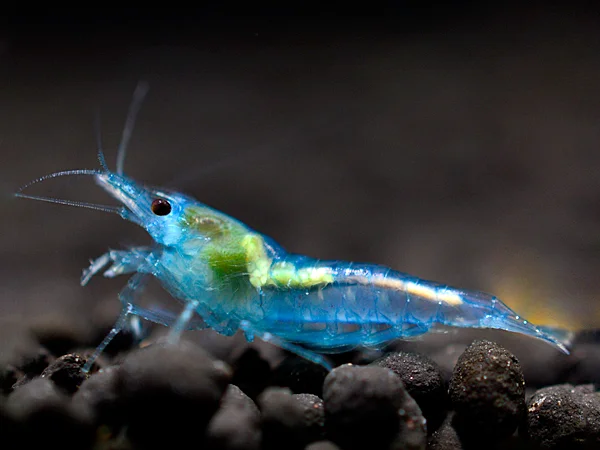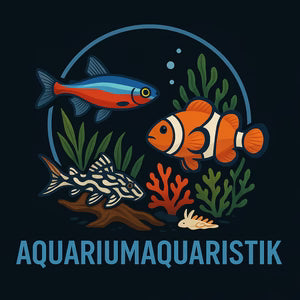1
/
of
1
AquariumAquaristik
Blue Jelly Shrimp - Neocaridina davidi
Blue Jelly Shrimp - Neocaridina davidi
Regular price
€3,49 EUR
Regular price
Sale price
€3,49 EUR
Unit price
/
per
Taxes included.
Couldn't load pickup availability
The Blue Jelly Shrimp ( Neocaridina davidi ) is a beautiful dwarf shrimp that impresses with its bright light blue, almost transparent coloring. It is a variant of the Neocaridina davidi and is one of the most popular color variants in shrimp keeping. Its soft blue tones make it a real eye-catcher in every aquarium.
Characteristics:
- Size : Females reach up to 3 cm, while males remain slightly smaller.
- Coloration : The Blue Jelly shrimp has a delicate, ice-blue to translucent coloration that shimmers in the light. The intensity of the color varies depending on genetics and individual care.
- Behavior : These shrimp are peaceful and sociable, they should be kept in groups to feel comfortable. They get along well with other shrimp species as well as with peaceful fish.
Attitude:
- Aquarium size : An aquarium of at least 20 liters is sufficient. Dense planting and plenty of hiding places, such as moss or roots, offer the shrimp protection and promote their well-being.
- Water values : The Blue Jelly shrimp is robust and adaptable. It prefers temperatures between 18 and 28°C, a pH value of 6.5 to 8.0 and soft to medium hard water.
- Food : As omnivores, Blue Jelly Shrimp feed on algae, detritus, leftover food, vegetables and special shrimp food. They help keep the aquarium clean by eliminating organic waste.
- Reproduction : The Blue Jelly Shrimp reproduces easily in the aquarium. Females carry the eggs under their abdomens and after about 30 days the young shrimp hatch and are immediately independent.
Special features:
Blue jelly shrimp are an excellent choice for beginners and experienced aquarists. Their fascinating blue coloring gives any aquarium an elegant and calming atmosphere. Since they are relatively easy to care for, they are also suitable for smaller aquariums or nano tanks. Their useful ability to eat algae and leftover food also contributes to the maintenance of the aquarium.
Share


